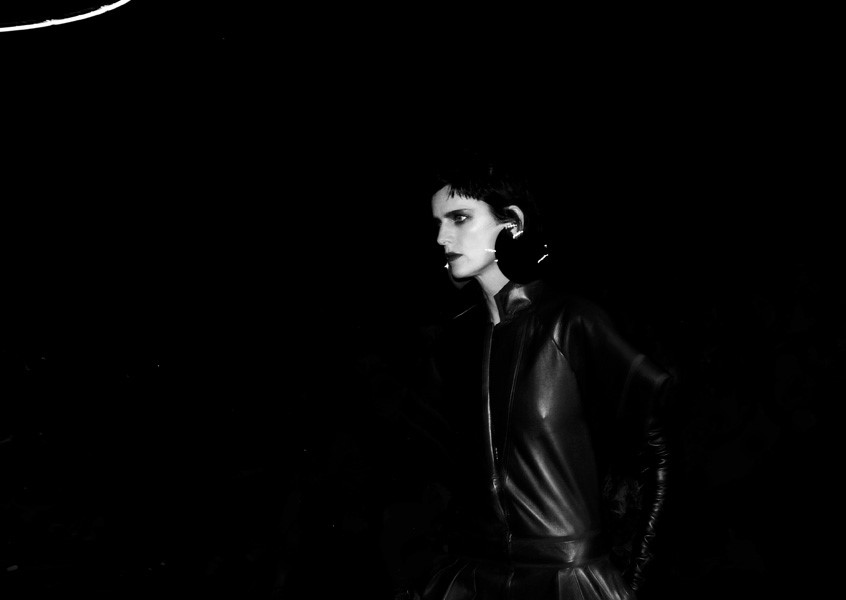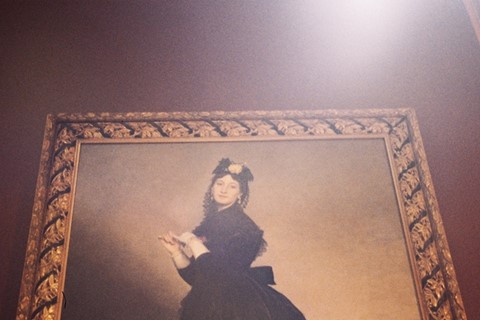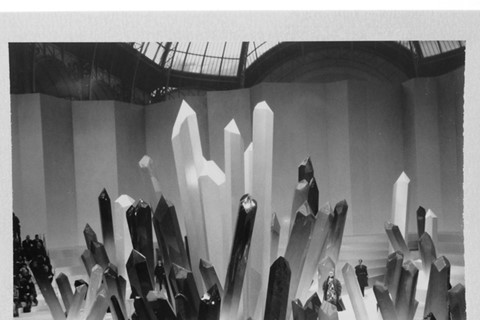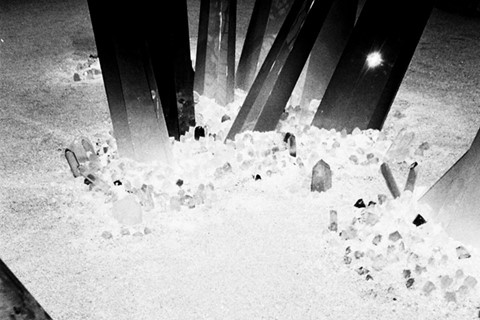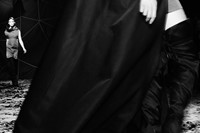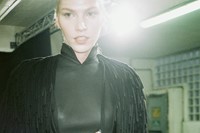As a counterpoint to last season, which was full of pretty pastels and girlish gorgeousness, the collection for autumn 2012 cast a darker ripple on the sun-dappled pool. The cold weather will hail a return to an aesthetic in which the fashion set
As a counterpoint to last season, which was full of pretty pastels and girlish gorgeousness, the collections for autumn 2012 cast a darker ripple on the sun-dappled pool. The cold weather will hail a return to an aesthetic in which the fashion set are more at home: a vision of femininity that errs on the side of sinister, rather than saccharine
Call it the Dragon Tattoo effect (the reference was obvious in short, spiky fringes at Versace and lashings of leather across the international catwalks), but after last autumn’s forays into bondage and fetish gear – done to almost cartoonish effect at Marc Jacobs’ glamorous brothel for Louis Vuitton – this year, we’ll be covering up in something that derives its attitude from the inner strength and poise that dark dressing can give, rather than anything so hyperbolically ferocious at the Dominatrix.
At Jil Sander, ultra-feminine couture shapes and styles were sliced through with angular and geometric seams that hung and stood to points on full skirts. Rendered in black and PVC, these gave a certain verve to a collection that was about much more than simply mid-century elegance.
That black doesn’t have to mean severe was the central message, underscored by the portrait of a 19th century woman in frilled and ruffled mourning garb at the entrance to the Balmain show in Paris’ InterContinental Hotel. Similarly, Sarah Burton’s show for Alexander McQueen finished with a black gown, voluminously tiered, that was as graphic and sculptural as it was fluidly pliable.
"In short, black is the new black."
There was a softness too at Viktor & Rolf, where the duo reinvented suiting and tailored separates according to a more nostalgic mindset: medieval-style false sleeves hung to the knees from the yokes of classic trench coats and silk blouses, while paper-bag waists on trousers and exaggerated Renaissance cuffs on tuxedo jackets gave black an opulence far beyond its usual connotations.
Which tallies perfectly with Karl Lagerfeld’s interpretations of it at Chanel, where sombre shades are worn not to suffocate or subjugate but in celebration of sophistication and the ultimate sort of refined hauteur. Models stepped around giant stalagmites and shards of monochrome kryptonite in a show-space landscape that spoke of the collection’s own acetic beauty.
At Gucci, meanwhile, Frida Giannini’s “modern-day romanticism” and “dark glamour” were inspired by the Pre-Raphaelite artists, whose penchant for a beauty informed by delicacy – almost frailty – translated as whispering double-layered tulle gowns and tactile velvet separates in burgundy and forest green, embroidered with creeping and verdant florals that referenced a sort of high Victorian decadence.
In short, black is the new black. But it doesn’t come as a subcultural gothic or punk punctuation for autumn; rather, designers have explored its historical uses – not simply for mourning, but as a symbol of taste and decorum: a shade that absorbs light but not emotion, that speaks volumes in sartorial stoicism.
Text by Harriet Walker
